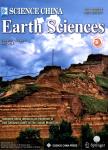Features and trends of the environmental change in the arid areas in Central Asia
Features and trends of the environmental change in the arid areas in Central Asia出 版 物:《Science China Earth Sciences》 (中国科学:地球科学(英文版))
年 卷 期:2007年第S1期
页 面:142-148页
学科分类:09[农学] 0903[农学-农业资源与环境]
基 金:Supported by the Knowledge Innovation Project of Chinese Academy of Sciences (Grant No. KZCX3-SW-355) the West China Light Project of Chinese Academy of Sciences (Grant No. 0634021001) the National Natural Science Foundation of China (Grant No. 40601103)
主 题:Central Asia ecological environment vegetation coverage GIS RS
摘 要:RS-monitoring index systems of ecological environment changes at a large scale, based on empirical data and trends in environmental change in Central Asia, are developed using NOAA and MODIS data. Moreover, with the help of mathematical statistics and GIS spatial analysis, the degrees, hazards and distribution extent of various possible ecological problems are discussed, environmental changes in Central Asia in 1990 and 2005 are separately evaluated, and dynamic changes in the environment in Central Asia over a 15-year period are analyzed. The results reveal that during the 15-year period from 1990 to 2005, areas of degenerated vegetation in Kazakhstan, Uzbekistan, Turkmenistan, Kirghizstan and Tadzhikistan were enlarged by 0.069×105 km2, 0.081×105 km2, 0.296×105 km2, 0.022×105 km2 and 0.112×105 km2, respectively. The ecological environment in Central Asia was in the state of significant degeneration and even deterioration. This study proves that NOAA and MODIS data can be used to successfully monitor the environment and provide useful results.



